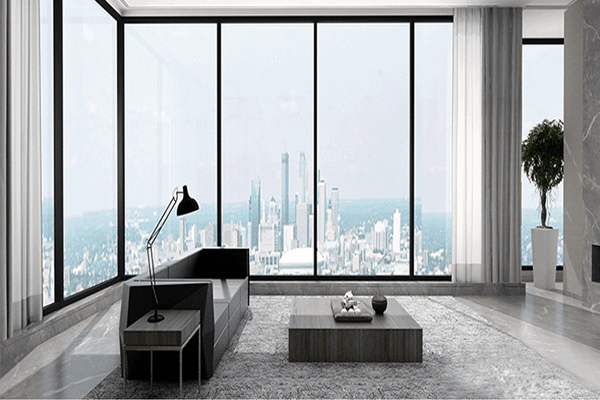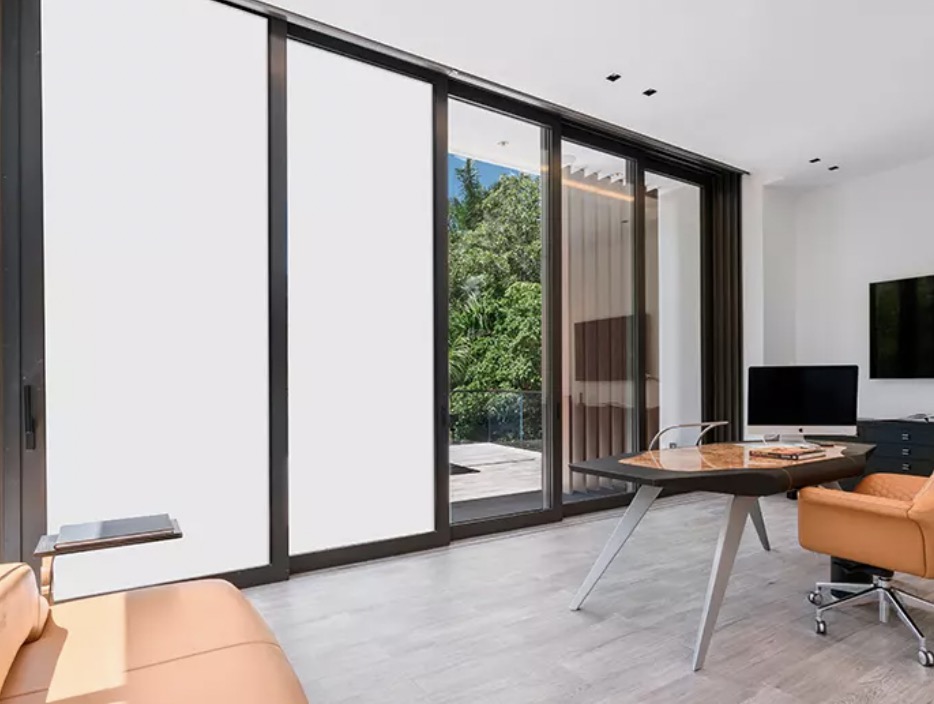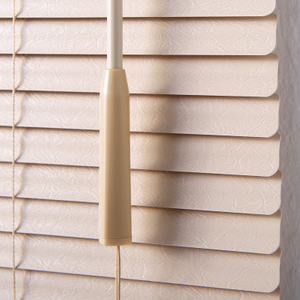Polymer-Dispersed Liquid Crystals, or PDLC for short, are a type of plastic film that adheres to itself and may be applied to existing glass surfaces. It can also be integrated into glass goods such as smart windows, smart displays, and electronics to provide privacy, security, and energy efficiency.
What Is A Liquid Crystal?
A "mesophase" of matter that exists between the solid and liquid phases and is thermodynamically stable is referred to as a "liquid crystal." The Austrian botanist Friedrich Reinitzer (1857–1927) made the initial discovery of liquid crystals in 1888 while researching the content of cholesterol in plants. According to his observations, cholesteryl benzoate has two melting points: the first produces a "cloudy liquid state," while the second produces a "clear state." What we currently refer to as a liquid crystal is the hazy liquid condition. The molecules that make up a liquid crystal are somewhere in between solids and liquids (and gasses), which have highly organized interior structures.The rod- or disc-shaped structures known as "mesogens" seen in liquid crystals point in the direction of a common axis known as a "director." They polarize readily (usually in the presence of an electric field).

Why Do Liquid Crystals Occasionally Become Scattered Within A Polymer?
The polymer makes it possible for liquid crystals to combine and solidify into a film form that may be encased in plastic or glass panels. Because of its uniform optical properties throughout its structure, the polymer is categorized as "isotropic." However, because the optical characteristics of the liquid crystal are not constant throughout its structure and can alter in response to an applied electric field, it is referred to as "anisotropic."
Why Is Pdlc Seen As "intelligent"?
The intelligence of PDLC is found in its capacity to alter its light-scattering or light-transmitting refraction depending on the electrical voltage it receives. Generally, a variable voltage (often within the 36-110 Vac range) induces a fluctuating electric field via the material. Remember that the intelligence is dependent on the "control system" that drives it. A photocell, a simple push-button switch, or a computerized building automation system might be this.
How Does Pdlc Smart Glass Function?
The liquid crystals are oriented randomly when there is no voltage applied, which scatters the light that enters. Light may travel through the liquid crystals when a voltage is applied because they align in a parallel manner.
Does Pdlc Smart Film Become ‘opaque’?
Dependent on the amount of voltage or current applied, it become opaque or translucent. Glass appears opaque only when it blocks or absorbs light. Nevertheless, certain PDLC items incorporate dyes within the liquid crystal, leading to a (permanent) dark hue that can potentially obstruct some light, leading to an "opaque" outcome.
What Uses Is Pdlc Smart Film Intended For?
It is used in consumer electronics, retail and museum display cases, transportation, hospitality, and healthcare environments, as well as in residential and commercial smart windows.Liquid crystals are also used in medical and industrial thermometers, as well as high-resolution displays for near-eye wearables.
Why Does Pdlc Film Scatter Light?
Several step boundaries are formed in the PDLC by the liquid crystals' refractive index, which changes depending on the isotropically transparent polymer they are in. Light is redirected as a result of each boundary's change in refractive index. The light is diffused in diverse ways because the material is packed with several liquid crystals, each of which has a border orientated slightly differently.
What Is The Pdlc Film Structure?
A polymer matrix thin layer with randomly distributed liquid crystals makes up PDLC smart film. The liquid crystal droplets are typically spherical in form and have a diameter of between two and five microns. Materials like polyurethane, polyester, or acrylic are frequently found in the polymer matrix.
Does Pdlc Smart Glass ‘conduct’ Electricity?
Because it is an insulator, the plastic internal PDLC layer does not carry electricity. Rather, it functions similarly to a capacitor's internal dielectric layer, with an alternating electric field across the film produced by the AC signal delivered to the capacitor's plates. This is how the signal frequency, which is typically 50 Hz or 60 Hz, is synced with the liquid crystals.
What Is The Light Transmission Of Pdlc Glass?
Normally, the transmittance decreases to around 2% when there is no voltage connection. Up to 80% can be reached when the device is connected to a power source, However, each manufacturer has a different maximum value.
Are Pdlc Only Available As Artificial Materials?
Not at all; common examples of liquid crystals in nature include proteins, soaps, detergents, and some types of clay.
What Are The Major Reasons For Using Pdlc Smart Film?
Reduce Carbon Footprint
Through dynamic solar management, the building's overall carbon footprint may be reduced, reducing the need for temperature control systems all year long and helping to meet the goals of the European temperature Law.
Energy Efficiency
With PDLC smart film, heat gain is reduced and furniture and other goods are protected from fading by blocking the passage of infrared light and UV rays. In the end, this could lower the cost of heating and air conditioning.
Privacy
because of the light's dispersion, everything behind the smart glass is effectively hidden.
Modern Touch
Enhances any space's aesthetic appeal. It gives traditional spaces a modern touch.

Which Industries Use Pdlc Film?
● Transportation
● Interior design
● Architectural (residential and commercial)
● Retail marketing
● Healthcare (since PDLC smart glass can replace unhygienic curtains and blinds which often carry germs)
● Banking, thanks to the privacy afforded to ATMs and as internal partitions
● Hospitality, especially bathrooms, since more natural light can penetrate interior spaces lacking windows to the outside world.
Which Form Factors Are Available For Pdlc Film?
Switchable Window Film
Switchable Toughened Glass
Switchable Laminated Glass
Switchable Double-Glazing
PDLC smart films come in a range of dimensions and forms. On existing glass surfaces, movie sheets can be utilized directly; however, laminated and smart glass are designed for specific applications.
Can The Pdlc Film Be Dimmed?
As a matter of fact, the voltage level may be changed to change the transparency of the glass from its off state of 0% to its maximum transmittance level, which is typically between 70% and 80%. A variable isolating transformer or an electronic switched-mode smart glass dimmer can be used to change the voltage in order to achieve this.

Where Can I Purchase Pdlc Smart Film Samples?
Don't worry if you're not sure where you're going; simply email us at martina@windowscover.com! Samples at reasonable prices are on sale.

 English
English















